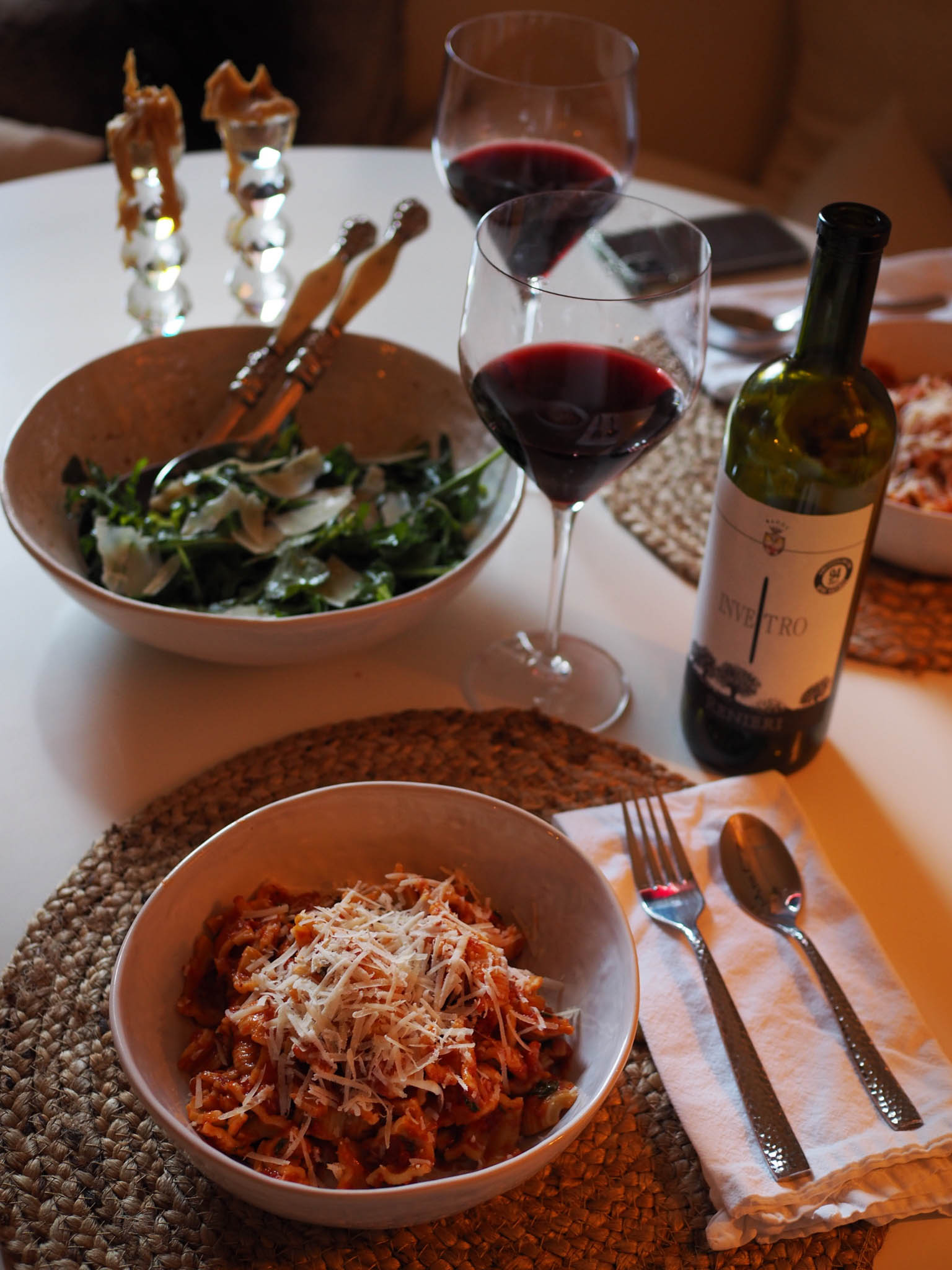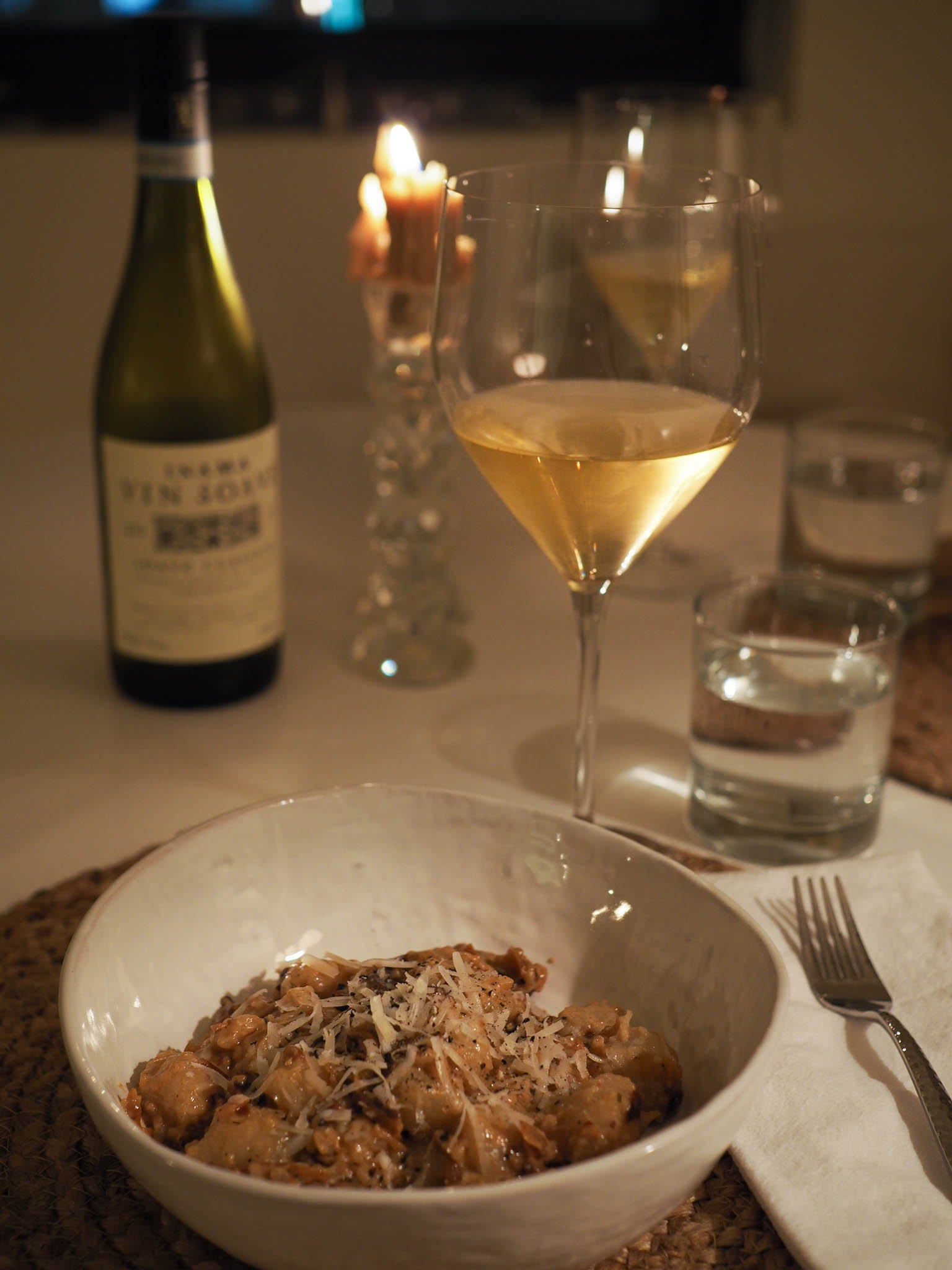
- Red Wines
- Red wines are often consumed with flavorful and rich meat and pasta dishes, but are equally lovely when paired with other foods or even on their own. Some common characteristics are bold flavors, noticeable tannin (a bitter compound from the grape skins that lends structure to the wine), and obviously deep red color.
- Common Grapes:Cabernet Sauvignon, Pinot Noir, Merlot, Syrah/Shiraz, Sangiovese, Malbec, Grenache, Tempranillo, Petite Sirah, Nebbiolo, Gamay.
- Are some of these varietals news to you? You may have seen or had them many times! Many well-known wines are known not by their grape but by the growing region. For example – Red Burgundy is made from Pinot Noir grapes, Chianti from Sangiovese grapes, and Rioja from Tempranillo grapes.

- White Wines
- White wines are often consumed with seafood or chicken, but as with reds, they are far more versatile than that! Some common characteristics are higher acidity, lighter body, and notes of fresh fruits like lemon, apple, or peach.
- Common Grapes: Chardonnay, Sauvignon Blanc, Riesling, Pinot Gris/Pinot Grigio, Semillon, Gewurtztraminer, Viognier, Chenin Blanc, Gruner Veltliner.
- Similar to reds, some white wines are more well-known by region than grape. White Burgundy is made from the Chardonnay Grape, and White Bordeaux often contains a blend of Semillon, Sauvignon Blanc, and Muscadelle. Many whites are also expressed in very different styles by different regions and winemakers; if you had a Riesling and it was too sweet for your taste, or a Chardonnay that was too creamy and bold, try a dry Riesling or an unoaked Chardonnay for a completely different experience!

- Sparkling Wines
- Sparkling wine is wine with high carbon dioxide levels, making for a fizzy end product. Sugar is added to the wine during fermentation, and as the yeast consumes this added sugar, the carbon dioxide is trapped (in the tank or in the bottle), carbonating the wine.
- Common Types (and their grapes): Champagne (Chardonnay, Pinot Noir, Pinot Meunier, produced in the Champagne region of France), Prosecco (Glera), Cava (Macabeo, Parellado, Xarello), Lambrusco.
- The typically high acidity and refreshing carbonation make sparkling wines an excellent contrast to high-fat foods. Try a Lambrusco with prosciutto, or a sparkling rose with smoked salmon.
- Fortified Wines
- It would be nearly impossible to describe fortified wines in one stroke. A young, dry sherry is completely different from a rich, aged port. Fortified wines share the addition of alcohol to raise the alcohol content ("fortify") in the final product, but results can be quite different!
- Common Types: Port, Sherry, Madeira, Marsala, Vermouth
- To start, try a dry sherry with Spanish cheeses and cured meats, or an aged port alongside dessert.
- More wines!
- Orange wine. Not made from oranges! Orange wine describes white wine left to ferment with the grape skins and seeds, lending a unique color and often a nutty, oxidized, and slightly sour taste.
- Petillant naturel. Wine that is bottled before the first fermentation is complete, trapping the carbon dioxide and producing a sparkling or semi-sparkling wine.
- Chilled reds! White wine goes in the fridge and red wine is served at room temperature, right? Not always: some reds taste great with a slight chill, like a hearty chilled Gamay with a grilled burger or BBQ!



